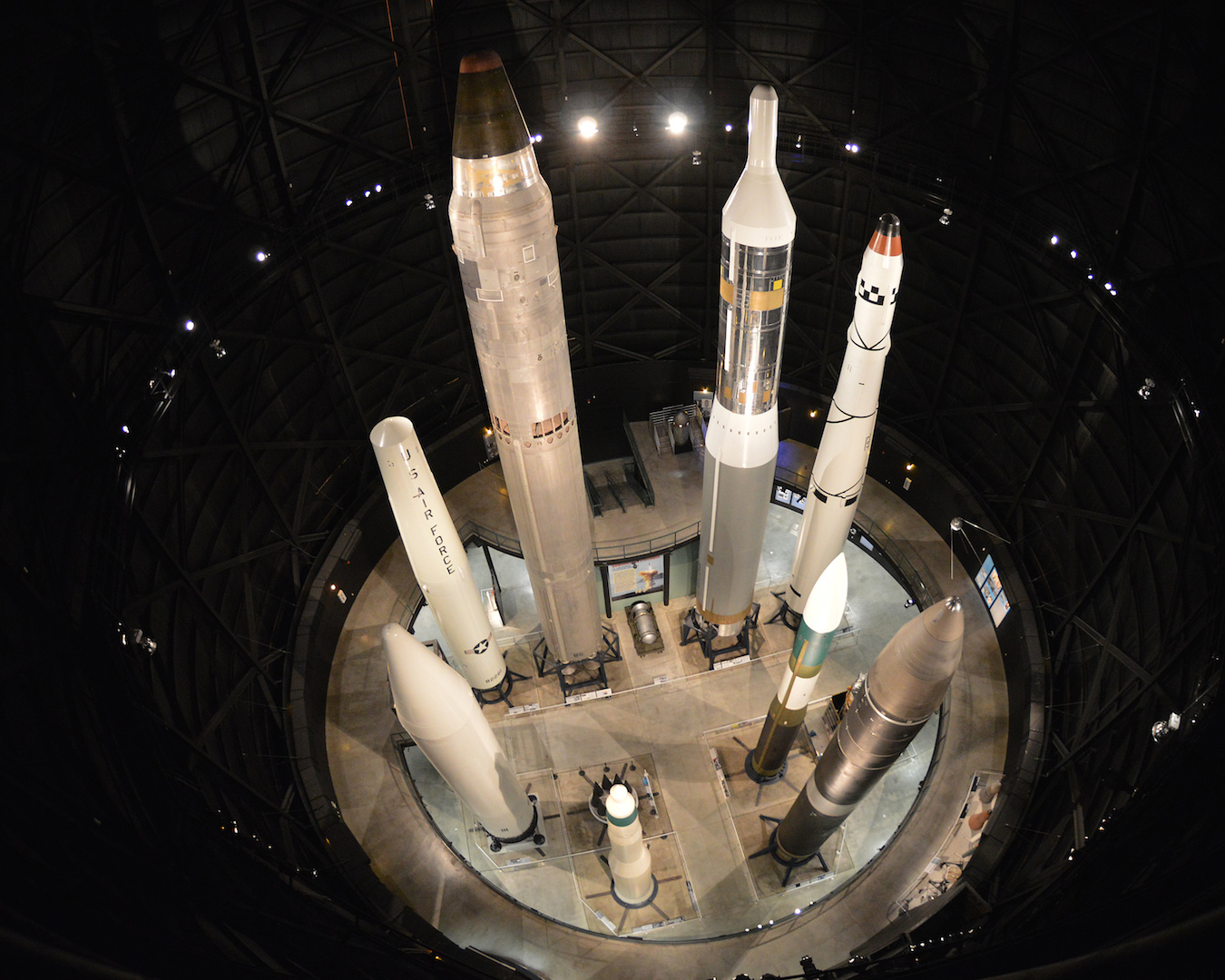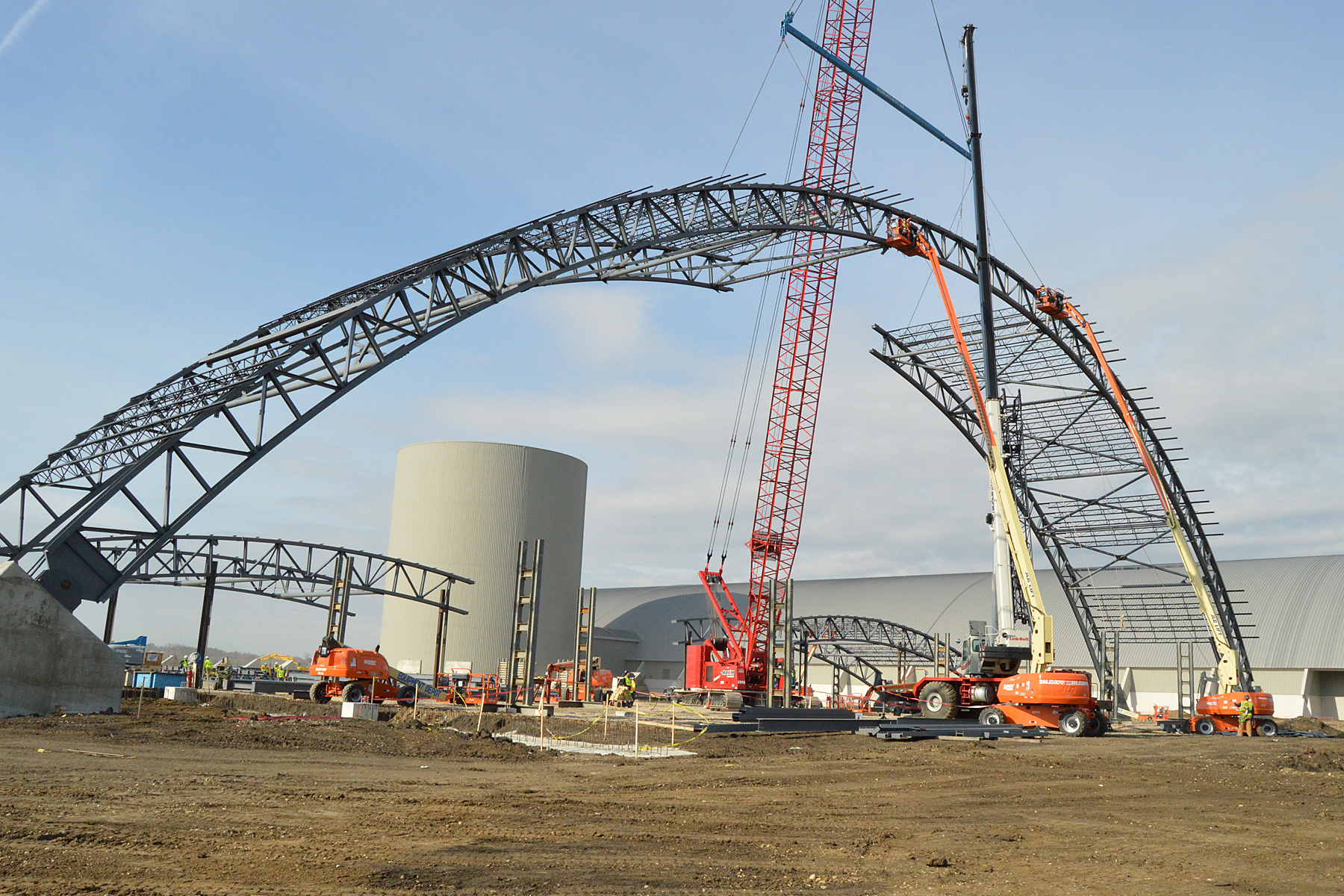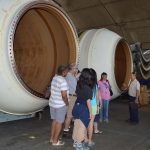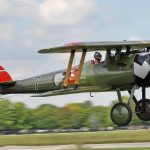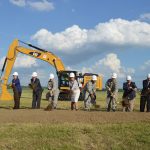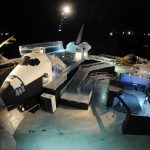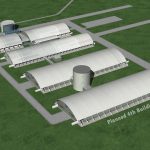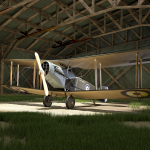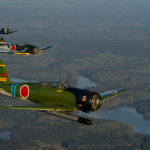The National Museum of the U.S. Air Force’s Missile and Space Gallery will close temporarily beginning Dec. 8 for approximately five months for construction linking the gallery to the museum’s new fourth building.Plans for the fourth building project design call for the Missile and Space Gallery’s exterior wall panels to be removed on the south side to form new entrances on the first floor and mezzanine levels. Once completed, the 224,000 square foot fourth building, which is scheduled to open to the public in the spring of 2016, will offer the public both ground and upper level views of all the new galleries (Presidential Aircraft, Research and Development, Space and Global Reach).
Artifacts and exhibits listed at www.nationalmuseum.af.mil/exhibits/missile/index.asp will not be accessible while the gallery is closed, except for the Apollo 15 Command Module, Dyna-Soar X-20A, Aeroject Aerobee Rocket and the Gen. T.D. White and “Five Stars in Space” exhibits.Although the public will not have direct access to most of the artifacts in the Missile and Space Gallery during the closure, a video featuring those exhibits will be available for view at the gallery entrance.
The public is also encouraged to explore the gallery online by visiting the museum’s Virtual Tour available at http://www.nationalmuseum.af.mil/virtualtour/index.asp. The virtual tour allows visitors to take a virtual, 3-D, self-guided tour of the entire museum. Visitors can navigate from gallery to gallery either by using a drop-down map or by following navigational arrows connecting the individual nodes. Icons indicate hotspots where the visitor can get additional information such as videos, audio and links to online resources.
According to Museum Director Lt. Gen. (Ret.) Jack Hudson, although the closure of the Missile and Space Gallery creates a short-term inconvenience, the long-term benefits are well worth the wait.“The fourth building will bring many advantages including the relocation of the popular Presidential and R&D Gallery aircraft from a controlled-access portion of Wright-Patterson Air Force Base to the main museum campus where they will be accessible to all visitors along with the Global Reach Gallery and an expanded Space Gallery,” said Hudson. “In addition, we will be able to display some artifacts that had previously been kept in storage such as the Titan IV launch vehicle, or kept outside such as the C-141 Hanoi Taxi and the C-130E.”
The $35.4 million fourth building is being privately financed by the Air Force Museum Foundation, a non-profit organization chartered to assist in the development and expansion of the museum’s facilities.With construction well under way, the foundation continues to fundraise toward their campaign goal of $46 million, which would provide for further options and requirements such as the west tow path, west tow path extension, theatrical lighting, Titan 4B stand, science, technology, engineering and mathematics (STEM) Learning Nodes and wireless capability in the building, said Air Force Museum Foundation, Inc. Chairman Fran Duntz. “We remain steadfast in working toward our campaign goal so that the vast capabilities of the fourth building can be utilized, and we greatly appreciate everyone who has contributed to make this happen,” said Duntz.
The National Museum of the U.S. Air Force, located at Wright-Patterson Air Force Base near Dayton, Ohio, is the world’s largest military aviation museum. With free admission and parking, the museum features more than 360 aerospace vehicles and missiles and thousands of artifacts amid more than 17 acres of indoor exhibit space. Each year about one million visitors from around the world come to the museum. For more information, visit www.nationalmuseum.af.mil.
The Air Force Museum Foundation, Inc. was established in 1960 as a philanthropic, non-profit organization to assist the Air Force in the development and expansion of the facilities of the National Museum of the United States Air Force, and to undertake and advance programs and activities supporting the museum. The Foundation raises funds through its membership program, the Air Force Museum Theatre, Museum Store, flight simulators and Valkyrie Café, as well as from direct donations. For more information about the foundation, visit www.afmuseum.com.
More pictured by Ken LaRock.
[inpost_galleria thumb_width=”200″ thumb_height=”200″ post_id=”16253″ thumb_margin_left=”3″ thumb_margin_bottom=”0″ thumb_border_radius=”2″ thumb_shadow=”0 1px 4px rgba(0, 0, 0, 0.2)” id=”” random=”0″ group=”0″ border=”” show_in_popup=”0″ album_cover=”” album_cover_width=”200″ album_cover_height=”200″ popup_width=”800″ popup_max_height=”600″ popup_title=”Gallery” type=”yoxview” sc_id=”sc1415914694053″]







